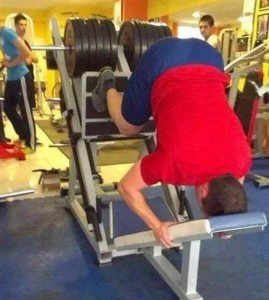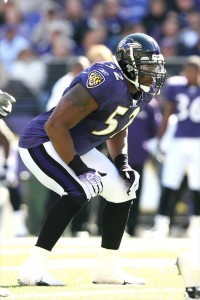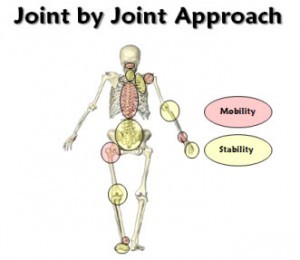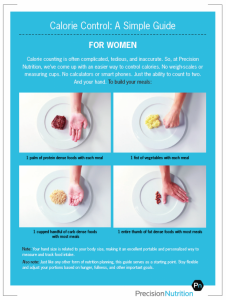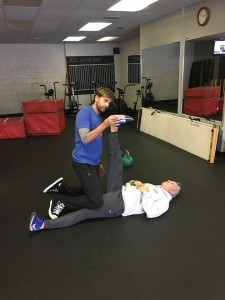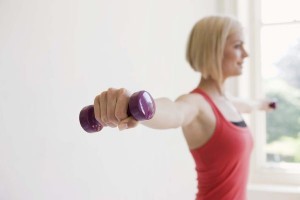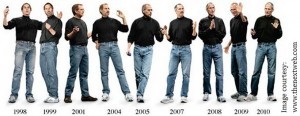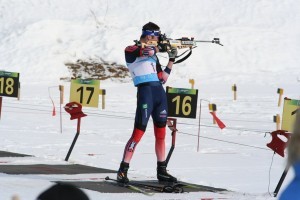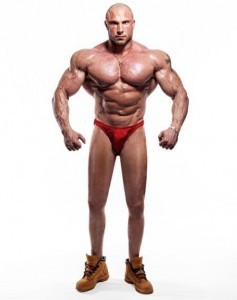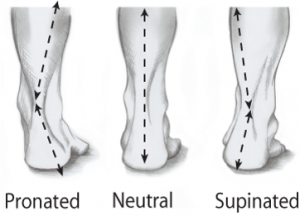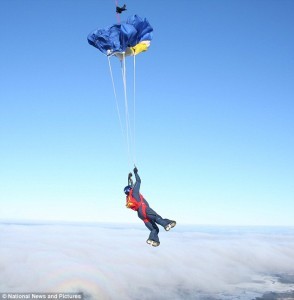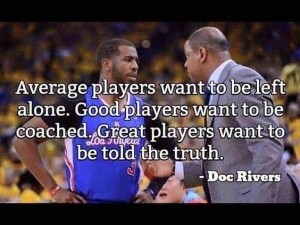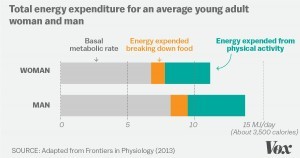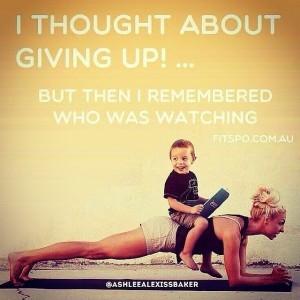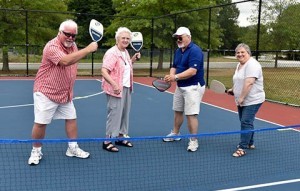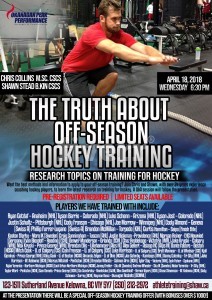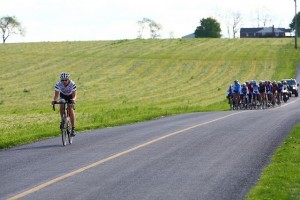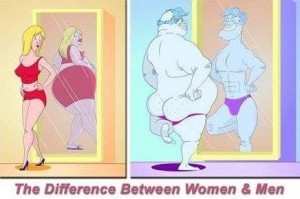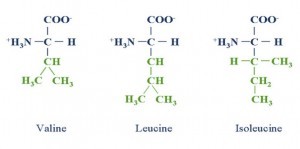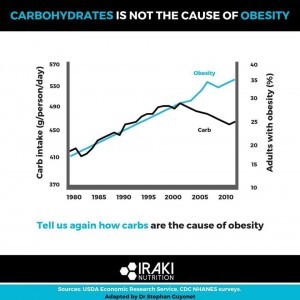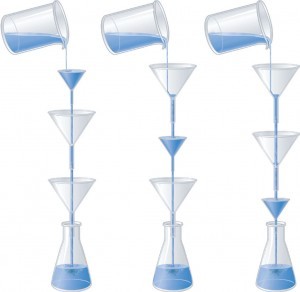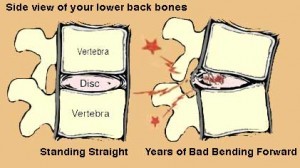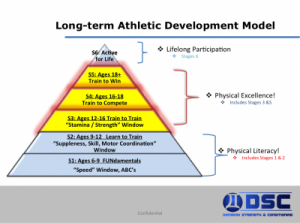Nowadays there seems to be an emphasis on being good at the basics. You'll hear quotes along the lines of this theme. For example, 'an inch wide, a mile deep' was one I heard from my friend Sal at UCLA. What he meant by this was that in the weight-room they spend a lot of time getting really good at a few movements such as the squat and deadlift rather being just average on a number of exercises. And it makes sense. Too often we see athletes, led by poor coaches, trying to do too much. Maybe it's too much load. Maybe it's too many exercises. Many it's too many different tools to learn to become proficient. Maybe it's just too much volume. It could be a combination of a number of these. So why does this happen? Well I guess part of it comes down to a coach not having confidence in their philosophy. It's a coach not believing in their own program. 'If we only do a few basic things really well surely we will be missing out on something?' So they throw everything and the kitchen sink at the athlete. And with these comes lots of tools and gear. And we defend this type of training by calling it 'functional'. And with this topic Occam's Razor comes to mind. This means that the simplest solution is usually the best. For example, if I want to get my legs really strong, squats are going to be a really good choice. The version and stance doesn't matter as much as the selection of the exercise in this case. They would be better than lunges or step ups. Squats give me the best chance to overload the legs with resistance and stimulate a strength gain. So squats would be an example...
8 Scientific Ways to Be Happy
- Chris Collins
- Fitness
- 1542 Hits
- 0 Comments
-
Everyone at Okanagan Peak Performance Inc trains for exactly the same thing. This may strike some as strange because we work with a variety of clientele that want to look, feel and play better. So how is it all our clients can be training for the same thing?Well it's because ultimately everyone wants to be happy.The person with chronic joint pain can't wait for the day when they can be pain-free. They have learned to live with their pain for so long that they now expect it. And the longer they live with it the higher their tolerance gets. Pain relief medication doesn't help as much or at all. Sleep is poor quality and constantly interrupted by stabs of pain. Just envisioning a pain-free day brings a small smile to their face but almost seems improbable or even impossible.And even if it's not-physical pain there are more and more people suffering from anxiety, depression and a lack of confidence. They would like to enter new situations and environments and not feel anxious. They would like to feel comfortable among crowds of strangers. And they probably wish they wouldn't feel overwhelmed when having to perform at school or work.Then there's the individual that wants to look better. This is the largest group of people that go to gyms. They want to drop a few pounds, tone up and alter their physique. They want to look better in their favourite pair of jeans. Ladies want to be excited at the prospect of shopping for a new bathing suit for that beach vacation. And guys want to have their shirts feel tight around the arms and their jeans loose around the waist.Lastly, there's the athlete that wants to play at their highest level. They want to compete without the risk of injury in the back...
Should You Be Ketogenic?
- Chris Collins
- Fitness
- 1642 Hits
- 0 Comments
-
Are you familiar with the term ketogenic? In the last few years this has become an increasingly popular nutrition approach used by some for health, weight loss and other reasons. Below is a quick overview on whether this approach will work for you depending on what your goals are.[caption id="attachment_5228" align="aligncenter" width="300"] A ketogenic diet. 5% carbohydrate. 20% protein. 75 % fat.First of all, we should probably define what we mean by a ketogenic diet. This is a nutritional approach that uses a high fat, low fat mix of macros that was initially developed to treat children with epilepsy. Basically when the body experiences a fast glucose levels drops. A particular hormone HSL, hormone sensitive lipase, increases and helps breakdown fat.What Is the Breakdown of Macros?As for the specific mix of carbs, fats and proteins, we're talking about 5% carbs, 75% fat and 20% protein. If these number don't mean too much to you consider that in the literature a VLCD (very low carbohydrate diet) is 40% of calories from carbohydrate. This is 8X the carbs that you would eat on a ketogenic diet. Another way of looking at it is that athletes may sometimes get as much as 70% of the calories from carbohydrates.So this is a vastly different approach from the various other 'low carb' approaches or performance nutrition recommendations.How Much Protein?In terms of protein, we sometimes hear more is better. And the more meathead you are the more you beat your chest and reach for another steak or chicken breast. On a ketogenic diet it's important to keep protein to the 20% threshold because anymore can lead to gluconeogenesis. This is the metabolic process where protein is broken down into its amino acids and then reassembled to make new glucose.When we're talking about eating 75% of our calories from...
Teen After School Weight Training Camp
- Chris Collins
- Fitness
- 1629 Hits
- 1 Comment
-
Recently the father of a young athlete called to inquire about some sport-specific coaching for his daughter.I asked him about her goals. And if she had any previous injuries. And what she was currently doing, strength training-wise, to achieve her goals.And he said nothing because he was too busy. Otherwise he could just do it himself.Now I had never met this parent before. I don't know what his educational background was, what type of training credential he held (or previously held), if any, and what experience he had training himself or others.I just asked the questions, listened and made notes.Then I asked if his daughter was small, average or tall for her age? And he said she was small.I then asked how old she was and explained that based on her chronological age (candles on a birthday cake), developmental age (how close to an adult she was in terms of development) and her sport would determine how we would approach her training to ensure it was safe, appropriate and effective for her goals.There was then a long pause at the other end of the line.So I had to ask 'are you still there?'. To which he answered 'Yes. I never knew any of that so it's probably a good thing I didn't get started trying to help her.'No problem I said. That's why we're here.Obviously safety is priority number one when working with young athletes. We take the time to make sure our athletes understand the proper way to warm up. We make sure they learn optimal technique for all lifts. We make sure they can read their program and understand the acute variables such as reps, sets, load, intensity, tempo and rest periods. And while we want to make sure the process is enjoyable we demand that the athletes that...
Mastering the Basics - The Athletic Position
- Chris Collins
- Fitness
- 1738 Hits
- 0 Comments
-
Have you noticed how much more invested athletes are in the process these days? They have their scheduled practices and games. They work with dietitians and go for physiotherapy appointments. They'll check in with a sports psychologist and see a massage therapist to keep everything moving well. They're all in and do whatever it takes. And that can be a great thing. The downside is when specialization happens too soon. Or turns into a situation that we are so focused on uncovering every last thing that could contribute to additional gains that we skip over the basics. Consider the following... An athlete doesn't do any rolling, stretching, mobility work or cool downs and resets. Even if they are doing some of these things they start late, go through the motions or simply rush the process. The result is extra visits to the massage therapist to address what was skipped over in training. Or the athlete that doesn't eat whole, fresh foods but is seeking out the best protein powder or weight gainer. I have nothing against supplements but this isn't the place to start. There are more examples we could look at but you get the point. When we skip, or rush, the basics we end up having to come back and re-do or seek out another professional do something we could have addressed ourselves. One of the most basic things for all sports is the athletic position. [caption id="attachment_5241" align="aligncenter" width="200"] One of the greats, Ray Lewis, demonstrating ideal athletic position. To get into the athletic position we're looking for the following: feet hip width or slightly wider weight on the balls of the feet, slightly unloaded at the heels flexed ankle-knee-hip chest up eyes up and focused on the target or goalThe only we might coach differently from the image...
Shoulder Solution Seminar - Recap
- Chris Collins
- Fitness
- 1617 Hits
- 0 Comments
-
Last week we hosted the Shoulder Solution Seminar. Coach Graeme did a great job identifying what accounts for many shoulder problems as well as some solutions to help this joint move and feel better. The first thing Graeme shared is that most shoulder problems related to issues of going overhead. Not many people complain of issues when their arms hang by the side. But as soon as you start reaching overhead, things change. And when consider many of the athletes that suffer from shoulder issues i.e. swimmers, throwers, tennis and volleyball players need to go overhead in their sport. So why do we have problems going overhead? Or what contributes to the various shoulder issues we face? Graeme broke this down to five main causes. Mobility versus Stability - If you start at the ground and go up, the body is a series of alternating joints of mobility and stability. In other words, the foot is our stable joint and the ankle is a joint of high mobility. After that the joints go in the following: knee (stability), hip (mobility), lumbar (stability), thoracic (mobility) and shoulder (stability). The image below shows this arrangement. [caption id="attachment_5250" align="aligncenter" width="300"] The body as a series of alternating segments of stability and mobility. Where we can get into trouble, and shoulder issues, is when we the roles of the joints can get reversed. For example, too much sitting can lead to tight hips and then we may try and move the low back leading to injury. Overpowered - There are a number of muscles which contribute to healthy shoulder movement and function. And sometimes we see muscles do too much of the work and others doing their fair share. The traps is a common culprit in this scenario. Do to working at computer screens, sitting...
How much, what and when to eat
- Chris Collins
- Fitness
- 1890 Hits
- 0 Comments
-
Nutrition is an interesting topic. For some, they treat it like religion. But it isn't like religion at all. It doesn't matter what I believe. Instead what should matter is what the research tells us to be true. We can decide to accept science or not.Only once we move beyond the idea of nutrition as a belief system can we address any of the questions we may have with the foods we eat.And there's a particular order, or hierarchy, of how to address our nutrition. This concept was proposed by Tom Venuto and works quite well.Before we get to addressing the layers of this hierarchy of this concept we need to understand the context of the situation. For this blog we are writing with the end goal being fat loss. The prescription would differ for someone with a performance goal or looking to add lean mass.The first place to start is to answer the question 'how much should we eat?' If we get this part wrong it's a lot harder to achieve our goal and can add frustration to positive efforts.In order to determine your daily caloric requirement we need to know about the individual. The sex of the individual - Men require about 12-13% more calories than women. If you eat according to portion size this is 1/8th and can be used to estimate energy when plating out meals. The age of the individual - A younger person will require more than a older person. For adults our caloric requirement will decrease by about 3.8 cal/year. The individual's occupation - Someone with a desk job will require less nutrition than a very active occupation like a bike courier. The individual's activity - Not counting work-related tasks it helps to know if the person moves a lot or not.And as we mentioned this...
Finding the Gaps in Your Training
- Chris Collins
- Fitness
- 1738 Hits
- 0 Comments
-
Life is all about balance. We can't be all on the one side of one 'thing'. For example I remember darkness being described as the absence of light. Unless we have an appreciation for the concept of light the definition of darkness holds no meaning.In training there are similar balances that exist. We need a certain amount of sympathetic stress (fight or flight) to get things done and keep us alive. And this needs to be paired with times of parasympathetic stress (rest and digest) when we can recover and relax. We need just the right amount of mobility coupled with an appropriate amount of stability to control the movement. Too much of either is not advantageous.We could list many more examples related to our health and the body where optimal health exists in a range between the two. Below are two specific examples you can test yourself to determine how to adapt your training going forward.These two examples can thought of as gaps. Or maybe differentials might be a better term than gaps. I'm using the term gap as this is how one of the examples was explained to me by Dr. John Rusin. He referred to something called the motor control gap and defined this as passive range of motion minus active range of motion. Writing this out as a mathematical equation this becomes: motor control gap = passive ROM - active ROM Passive range of motion refers to the extent a joint can be moved by an external force with no effort by the individual. For example, in the picture below we are assessing the passive range of motion as the leg is being lifted for me into flexion with no effort on my part. [caption id="attachment_5278" align="aligncenter" width="225"] Passive range of motion With active range of motion there...
The Best Cues for Coaching Speed
- Chris Collins
- Fitness
- 1933 Hits
- 2 Comments
-
This year Immaculata High School added a Sports Academy program for volleyball, soccer and basketball. And Okanagan Peak Performance Inc has been helping out with the strength and conditioning for this program. This morning we spent a good portion of the training session working on speed. And there a number of cues for speed to apply to almost every sport. Below are a number of things that were shared with the athletes to improve their speed 1. Knee Up - Toe Up One of the biggest factors that distinguish a runner from a sprinter is the degree of knee lift. The best sprinters in the world will flex the knee and hip to lift the frontside leg. [caption id="attachment_5282" align="aligncenter" width="300"] Knee up toe up on the front side leg. Runners on the other hand have minimal frontside knee and hip flexion. [caption id="attachment_5286" align="aligncenter" width="300"] Runners have less knee lift compared to sprinters. As for the toe up position this is what we refer to as a dorsi-flexed position. Toes pointed down is called plantar flexed. In order to take advantage of the stretch shortening cycle and elastic potential of the foot and ankle we want to be in the toe up position. 2. Longer is StrongerA longer core is a more stable core. If you trace from your tail bone to the base of your skull at the back of your head you can get an appreciation of the length of your spine. A taller posture lends to more stability than a shortened or slumped posture. The next time you watch a race pay attention to how tall the better athletes are compared to the later finishers. What I mean by tall is whether or not they get shorter with ground contact or not? If they can stay tall they...
Ice cream, beer and the best fitness results
- Chris Collins
- Fitness
- 1724 Hits
- 0 Comments
-
Last weekend we held an end-of-season bike ride followed by a BBQ at Okanagan Peak Performance Inc. At the BBQ there were burgers, ice cream and beer. This is typically the kinds of foods that fitness coaches tell their clients to avoid eating. And yet there we were serving it up to our clients. Was this some kind of trick? Do we not care about our clients results? Do we not believe these to be unhealthy foods? Why would we do such a thing? [caption id="attachment_5291" align="aligncenter" width="300"] When you're offered beer or ice cream in a gym. Well for a number of reasons. And the first being is that these are foods and drinks associated with fun times. And we want our clients to be able to relax and have some fun from time to time. The goal is never to go cold turkey with any of the indulgences we may enjoy. If someone loves chocolate we would never say 'you can't eat chocolate again' or worse 'you're a bad person if you do eat chocolate'. Instead the message should be to recognize where does chocolate fit into a healthy living plan? Maybe I won't eat it daily but instead will look to reduce my consumption and set it aside for special times. For example, maybe I'll watch a fun show on the weekend and have some chocolate while I do. We need to find the time and place for burgers, beers and ice cream. The other thing to remember is that these are low nutrition foods. It never ceases to amaze me to look at any 'health or whole foods' store flyer. You will always be to find offerings such as tofu burgers, soy ice cream and vegan cookies. Adding a trendy nutritional label doesn't make these higher in nutritional value....
Lift Heavy or Lift Lots?
- Chris Collins
- Fitness
- 1909 Hits
- 0 Comments
-
There can always be a number of ways to achieve a result. As the expression goes, many roads lead to Rome. But the more specific we can be with our goal the more specific we can be with the prescription.With resistance training the question can often be one of should I do lighter weights and more reps or heavier weights and fewer reps? And typically the average person will be led to believe that lifting heavy weights makes you big and bulky and so they select lighter weights in order to tone and not get big.[caption id="attachment_5301" align="aligncenter" width="300"] Often times people will select light weights with the goal to tighten and tone while looking to avoid increased mass.But this isn't the best approach. If we think about the group that trains to put on the most size i.e. bodybuilders, they will typically train with higher volume (i.e. reps x sets) to stimulate a hypertrophy (i.e. growth) response.Additionally, the people that train most intensely e.g. sprinters, will have some of the leanest physiques out there.So there appears to be some confusion as to what we should do to get leaner and or stronger.A study by Mangine et al. 2015 looked at the effect of volume and intensity when it comes to developing size or strength. The study included 29 resistance-trained men and ran for 8 weeks.The participants were divided into two groups. One group followed a high intensity protocol by performing exercises in the 3-5 rep range or approximately 90% of their 1 rep max (RM). Three minutes of rest was allowed between sets.The other group followed a high volume protocol with exercises performed in the 10-12 rep range or approximately 70% of their 1 RM. One minute of rest was allowed between sets.Here's what they found.The high intensity group made larger...
Use Rituals to Your Benefit
- Chris Collins
- Fitness
- 1675 Hits
- 0 Comments
-
We are creatures of habit. There are certain things we do routinely, or ritualistically, in our lives. I'm sure we all do certain things every morning as we start our day. And we do them the same way. For me, it would be waking up in the morning and going to the bathroom. And unfortunately, I'm on my phone for the first part of the day. I say unfortunately because this usually involves checking social media to see what everyone else in my circle of 'friends' ate for their last meal. Or to check in for any potential spoilers in the shows we watch. Obviously I don't need to be doing these things every morning when I wake. And I should add a new ritual to break this habit. Another example of a daily routine can involve the commute in to work. Have you ever been deep in thought about something and driven right past where you need to turn? And when you finally snap out of your day dream you realize you've driven well past your exit. But habits can be positive and helpful. They can help us conserve energy. We don't have to work too hard for something to comes to us automatically. They can help us reduce brain fatigue. It does't take a lot of focus or attention to brush our teeth in the morning. [caption id="attachment_5304" align="aligncenter" width="300"] Steve Jobs over the years. Could this fashion ensemble be the reason for the iphone? They can help reduce stress. When things are straightforward and easy for us to do we can relax a bit. Think back to the last time you had to try something new. It was a little more stressful, wasn't it? They help us quickly complete a task. If we don't something many times before...
Are You Blowing It?
- Chris Collins
- Fitness
- 1766 Hits
- 0 Comments
-
When someone looks to get started with a health and fitness routine it's always interesting where they put the emphasis. Do they put most of their focus and effort on the training? Do they train as frequently and intensely as possible? Do they put their efforts into their nutritional plan? Do they make most of their meals? Drink more water? Do they focus on getting their sleep in order? Do they get to bed and get up at the same time daily? There are lots of things that will lead to a positive result. But often times we skip the one thing that is the most basic and can have a huge impact on results. Think back to the first thing and the last thing we'll do in this world. And that's breathing. Breathing is vitally important to everything we do. Yet it gets skipped over or forgotten completely. Which is surprising when we consider we can't go 3 minutes without it. Below are 4 quick ways we can use breathing to help our training or sports performance 1. Calm Our Nerves[caption id="attachment_5313" align="aligncenter" width="300"] Imagine trying to shoot a target with a racing heart rate. Think of the number of sports that require accuracy and precision. Imagine having to make an 8 foot putt in order to win a PGA tournament. Or having to make a couple of free throws with no time on the clock in order to win a basketball game. Or, the one I think that would the toughest, would be having to shoot targets from a standing position in a biathlon race.With all of these there would be benefit to slowing the breathing pattern and calming the nerves before having to perform. 2. Increase MobilityThese days everyone is looking to increase their mobility. They want to have greater stride length as a sprinter. They want to have greater shoulder...
How Hills Can Make You Faster
- Chris Collins
- Fitness
- 1929 Hits
- 0 Comments
-
Do you watch Fargo? I'm not talking about the movie, which was pretty good, but instead I'm referring to the TV show. We're just getting into it and it's awesome. But a word of warning to those with small children or that are squeamish...there's some killing and bloodshed. In fact the only thing that probably kills more than Billy Bob Thornton's character is speed. [caption id="attachment_5317" align="aligncenter" width="206"] Only speed kills more than Billy Bob Thornton's character on Fargo. That's the truth. In sports, speed kills. And for team sport athletes there are a number of things we can do to improve our speed. One thing I really like to incorporate into training to help with speed is to run some hills. Why Run Hills? Hills can be a great tool to help us get faster because it encourages proper foot contact. Imagine bounding up a fill as though jumping from one foot to the next. This doesn't really work we if land on the heel and try roll through the foot. If we used a heel-toe roll strategy we would lose all the momentum generated by bounding from one leg to the next. And we would slow right down. https://youtu.be/p2bYUE2roX4 The other great thing about running hills is the increased need for the arm action. The arms will help with propulsion and balance. Sometimes we'll see athletes start to move but not using their arms initially. In this case they are not as fast or explosive as they could be. Due to the inclination of the hill the arms become more of a necessity to assist with propulsion and to help us maintain balance as we jump from foot to foot. This can become more apparent when running downhill. Larger arm swings from the shoulder will help keep the arms...
Strength - How Much is Enough?
- Chris Collins
- Fitness
- 1827 Hits
- 0 Comments
-
There are a number of things we can do to improve our health and fitness. Strength training is one of the more popular options.And it's not an uncommon goal to hear people new to exercise describe their goal as wanting to get stronger.'I'd like to have stronger arms' says the woman as she massages the back of her triceps.'I'd like to be able to do a pull-up' says the female athlete trying out for a new team.'I'd like to deadlift xxx pounds' says the business executive that wants to be able to test himself in a gym setting.And these are all reasonable goals. But after we've trained for an appreciable amount of time e.g. 6-12 months, we notice the gains start slowing or stop altogether.For example, the person that has never deadlifted could pull 135 lbs in their first month. And it's not unreasonable to hit 225 lbs by their third month. This progress won't continue linearly for the rest of the year. In other words if three months is a quarter of the year we can't expect this person to increase their deadlift to four-times their three month total by the end of the year. This would result in a 900 lbs deadlift. That's not happening.So we get it that our strength has limits and that the gains come more quickly at the beginning.But at point should would be satisfied with our strength? When is enough strength, enough?Well, if you're a competitive lifter you're never satisfied with enough. You're always seeking an extra kilo on the bar or maybe a second rep at your max load.This is because the higher we get in a competitive field the harder it is to continually improve. Track and field shows us numerous examples of this. In the 100 m race it's not uncommon for...
An Athlete with Osteoporosis
- Chris Collins
- Fitness
- 1725 Hits
- 0 Comments
-
I remember hearing a comment during a conference that I attended that for every hour of flying time a jet requires 18 hours of servicing. When I shared with a few friends that are pilots they quickly agreed and weren't surprised. And hopefully most of us recognize how much more valuable we are than a plane. Yet, we fail to make the same investment in our health and care. Specifically when it comes to our rest, recovery and regeneration. Sometimes it can seem as though all we do is push, push and push some more. We look to add more load to the bar. We want an extra rep or two. We seek extra distance or faster times. And I get it. I want these things too. But we have to be honest with ourselves. And by that I mean to look at our own lives and work ethic and answer the question 'Am I doing enough? And am I going intensely enough?'. Maybe we need an outsider to answer this for us. Because here's the thing. The person who does as much as they can and as hard as they can wouldn't think they need to take a break or slow down. Whereas the person who makes nominal efforts or investments in their health believes they are making huge efforts. [caption id="attachment_5338" align="aligncenter" width="300"] Are we pushing hard enough? Or do we need a break? And here's what typically happens with both groups of people. The person going all-out, doing as much as they can doesn't see themselves as doing too much. They have always done this and it's not out of the ordinary. Their memories allow them to recall former years when they were leaner, stronger, faster and this drives them on an impossible quest for improvement. And the other guy...
Knee Solution Seminar Recap
- Chris Collins
- Fitness
- 1858 Hits
- 0 Comments
-
On Tuesday and Wednesday this week Okanagan Peak Performance Inc presented the Knee Solution Seminar. Below is a recap of the main points from this presentation. Why We Have Knee ProblemsIn order to have the healthiest knees we need to make sure the joint sits in the proper place. And to do this properly we started at the ground looking at the foot. If the foot sits in a pronated position, with a collapsed arch, this will cause the knee to fall inward. And if we have a supinated foot, or high arch, the foot will roll out to the outside. [caption id="attachment_5344" align="aligncenter" width="300"] Image showing a pronated, neutral and supinated foot position. We ran through a couple of drills showing the attendees how to self-assess the positioning of the foot. One drill involves placing the thumb and index finger on the same foot just below the malleolus. If your thumb and index finger are on the bumps on the sides of the ankle you're too high. Slide the fingers lower until them feel soft tissue. From this position roll the ankle inward. On which finger do you feel more pressure? What happens to the arch? What happens to the knee? Now repeat this drill and roll the ankle outward. Which finger feels more pressure? What happens to the arch? And where does the knee go? The goal for this drill is find the position where there is 50-50 pressure on the thumb and index finger. Once the foot is set in this position the knee will line up optimally as well. The other way we look at foot position was by considering the plantar surface (bottom of the foot). On the bottom of the foot imagine a triangle. And the three lines of this triangle are from the pad under...
Getting a Second Chance with Your Health
- Chris Collins
- Fitness
- 1531 Hits
- 0 Comments
-
The great thing about life is that are lots of opportunities for second chances. Growing up I know my parents gave me more than my fair share of second chances. I remember when I was in high-school and had one of the family vehicles. There was some fresh snow on the ground and I was driving back after lunch with a friend. Behind the school was an alley and I was fishtailing the back end of the car to show off for my friend. Well I ended up knocking out a guy's backyard fence. It went down like a stack of dominos. This guy could have gone to the police. He could have gone to the principal. He could have called my parents. Instead he came and found me at school. And told me he was going to let me come to his place on the weekend and fix the damage I caused. Talk about catching a break and getting a second chance! I'll never forget what this guy did for me and how it kept me out of trouble. But there are some times in life when you don't get a second chance. [caption id="attachment_5353" align="aligncenter" width="294"] If your chute doesn't open you may not get a second chance. And there are some times when a do-over can't happen quickly enough. [caption id="attachment_5352" align="aligncenter" width="264"] When mom mixes up pyjama and picture day. Hopefully the worst that happens to us in order to make a chance is an embarrassing story. But for some there is a serious health complication that gets our attention. It causes us to reflect on the decisions we are making regarding our health, good or bad. And this second chance allows us an opportunity to right the ship. We are able to turn things around and improve...
5 Traits of the Best Athletes
- Chris Collins
- Fitness
- 1896 Hits
- 0 Comments
-
One of the cool things about working in the field of strength and conditioning is the opportunity to work with some great athletes. Over the years we've coached a number of Olympians. Some of them have reached the podium and won medals. And we've worked with athletes that have won championships at the highest levels of their sport.With enough time you recognize enough traits that the great ones all share. In particular there are 5 traits the best athletes all have in common. And spoiler alert! I t has nothing to do with talent!Below are the 5 Traits of the Best Athletes.1. They are CompetitiveThe best athletes always give their best. They aren't satisfied with mediocrity. They don't hold back. If you nudge them they push back a little harder.Now I don't mean to say these individuals go all out, all the time. They are smarter than that. They use their talents as weapons and only display them when the payoff is maximal.For example, I remember a few years a player for the Kelowna Rockets. Everytime he hit the ice he would fly around at top speed. Half of his hits would miss the mark. And even though he was going top-end all the time he seemed to be a step behind the play.Contrast this with another former Rocket, Jamie Benn, who almost appeared to be floating at times only to spot an opportunity and separate himself for a scoring chance.Another example that comes to mind is playing pick-up football with friends. If someone gets beat on defense the competitiveness shows up with what they do next. Do they quit on the play? Or do they dig in, sprint and recover to prevent the opponent from scoring? In one moment I can tell if that player can become great or not...
The What, How & Why of Warming Up
- Chris Collins
- Fitness
- 1779 Hits
- 0 Comments
-
Welcome to 2018! As we turn the calendar on a new year many will be embarking on a new fitness routine. With more people getting started in fitness there will be more injuries on the way. What can we do to make sure our fitness efforts are safe and effective?One of the things we want to make sure to do is to warm-up properly for exercise. If you've ever attended a track and field meet and watched the 100 m race you'll notice something.Although these athletes will only race for 10-12 seconds depending on the level, they will warm-up for much longer than that. Elite sprinters won't arrive at the track 30 minutes before their race to lace up and pull a heel to their glutes. Instead their warm-up could last hours. And this is to enhance their performance and to minimize injury.So what does a warm-up do?A warm-up helps accomplish a couple of things. It helps improve muscle dynamics so we are less inclined to injury It helps prepare us for the demands of sport (or exercise)Regarding reducing the rate of injury, over 30% of sports/training injuries are related to skeletal muscles so it makes sense that we would want to prepare them adequately for the demands to come.Are there different ways to warm-up?Well are the different ways and different types. In terms of types we can think of active and passive warm-ups. Active warm-ups are things we do ourselves by moving our bodies. And these can be general, like jogging or ridding the bike before a training session, or specific with movements that mimic the demands of the sport or activity.Warm-ups can also be passive where we are warmed by external means. This could be by sitting in a sauna or a hot tub or having a warm shower.Does the...
Don't Use Exercise for Fat Loss
- Chris Collins
- Fitness
- 1735 Hits
- 1 Comment
-
Newsflash! As a society we're becoming more over-weight and more obese. This shouldn't come as news to anyone. And with the current month we've entered a number of people will vow to change behaviours and embark on a fat loss program. They will swear off certain foods. They will commit to training six days per week. They will sign up at the gym where that really fit girl or guy trains. And they may stop in to the new supplement store to talk biochemistry with the kid that works afternoons peddling potions and elixirs of the gods.The unfortunate thing is this won't work.And we know it won't work because it hasn't in the past. And it will repeat again next year when we flip the calendar from December to January.Now it's time to put away the decorations. The fun times end. The company leaves. The parties are over. And we have to face reality and return to work or school. And if we're like the average North American we will have gained seven pounds over the Christmas holidays.And since we all 'know' that exercise burns off the extra holiday weight we embark on this post-holiday health correction.In terms of where we burn our calories, our metabolism, the food we eat and our activity accounts for the total. The table below (1) shows this.[caption id="attachment_5379" align="aligncenter" width="300"] Daily caloric expenditure as a function of metabolism, food and activity.The truth is that physical activity will only account for 10-30% of the calories we burn in a day.Think about that for a minute...physical activity could potentially account for as little as 10% of the calories you burn in a day. And exercise is only a part of this.In the table above the example uses a daily measure of 3500 calories per day. Physical activity could be...
10 min of Exercise Improves Reaction Time
- Chris Collins
- Fitness
- 1606 Hits
- 0 Comments
-
Do you struggle to get started on a fitness plan? And maybe it's not for a lack of motivation but something else stands in your way.Maybe it could be an injury that needs to heal before you can push and challenge yourself? Or maybe it's overcoming inertia? In other words it's been so long since you've done something it feels overwhelming to consider starting. And for many people it could simply be a lack of time. We're all busy. And there doesn't seem to be enough hours in the day. Obviously all the fit people out there are putting in multiple-hour workouts daily so what's the point, right? I mean if you can't find a few hours a week what kind of results can you really expect to achieve? Well, quite a lot actually. A recent study (1) looked at doing 10 minutes of exercise. One group rode a stationary bike for 10 minutes and the control group just sat for 10 minutes. After the 10 minutes both groups performed a mental task that involved eye tracking. This allowed the researchers to measure how accurately the subjects performed the test as well as how quickly they reacted to a visual stimulus. What they found is that riding the bike for 10 minutes at a moderate to vigourous pace resulted in a more accurate completion in the task and up to 50 ms faster reaction time. This might not seem like a big change in reaction time but it works out to a 14% improvement. But that's not the only interesting thing about this study. Previously studies of this type had found similar results after studies of 24 weeks in duration while cycling for 20 minutes. This study was a single bout, not almost half a year, and involved a 10 minute ride...
4 Components for Success
- Chris Collins
- Fitness
- 1701 Hits
- 0 Comments
-
Sometimes I wonder how many people that train are satisfied with their results? I would suspect that those that don't continue training are not satisfied with the results they are seeing. But there must be some that aren't seeing the outcome they had hoped for and continue chugging along. Maybe they feel if they stopped that their health and fitness would be a lot worse than it currently is. Or maybe they really enjoy the process and the fitness community that they train with. I'm not sure? If we look at just the group that doesn't achieve their goal and then quits I would bet that something was missing. And by something I actually means three things. And these would be the plan, the execution and the review. If we don't have these three things in place it makes it really hard, if not impossible, to achieve the best health and fitness possible. Look at it this way. Imagine if back when you were in school you just showed up. You hadn't selected any classes. You didn't know which rooms to go to. You didn't bring any books, pens or anything to write on. There wasn't an agreed upon time to start. And the day finished whenever. And let's imagine as well that the teachers all showed up at random times. And there was no clear assignment of teaching areas. There weren't homerooms assigned for each grade. No lesson plans had been created. And there was no consideration as to what would be taught, to which students and at which level. All that was known or agreed upon was that there was this structure, that was the school, and there were people, usually older with more knowledge, who showed up to pass on some knowledge to the younger people known as students....
40% Better Results w/ Coach vs. DIY
- Chris Collins
- Fitness
- 1574 Hits
- 0 Comments
-
I remember back when we were building our house. We had decided to do a natural rock wall and stairs in our backyard using some huge boulders. When the guy who was going to build the wall showed up and rang the door bell I wasn't sure if I should open the door or call Crime Stoppers.[caption id="attachment_5396" align="aligncenter" width="300"] My reaction when I saw the wall builder show up.But as it turned out he was legit and built a beautiful wall in our backyard.Now as this was during the summer and I was home for the day I offered to help the guy out. Although he had some heavy equipment to move all the boulders around I figured there would be benefit to a second set of hands.My thoughts were that this guy would probably appreciate the help. And maybe the job would go more smoothly. And if the job took less time because I was helping him maybe it would shave a little of the bill time-wise. Because as some of you know building a home isn't cheap.So I offered to help. And this is what the guy said.'It's 50% more if you watch. Double if you help.'Roger that. Alexandra packed up some food, drinks and a blanket and we headed to the beach.But home build projects aren't the only areas where we might be tempted to lend a hand or DIY (do it yourself). We all know lots of examples where people do their own investing. They take care of their own vehicles. They log on to Web MD to diagnose whatever ails them. And a number of people will look to take after their health and fitness on their own as well.But what kind of results can you get on your own compared to using a coach? Can...
5 Steps to Achieve Your Fitness Goal
- Chris Collins
- Fitness
- 1722 Hits
- 0 Comments
-
There's an expression we'll commonly use at Okanagan Peak Performance Inc that goes 'It's simple but not easy'. What we mean is that healthy living involves a simple plan but following the plan isn't always easy.Get eight hours of sleep per night. Drink water. Eat protein and veggies. Move your body, preferably with resistance.That's not very complicated. Every 5 year old would understand this prescription. Yet most adults struggle with doing these things.And we know they struggle because each year they put on more weight. They become more diseased and injured.So where is the breakdown? We have a simple plan. We understand the plan. Yet we fail to achieve the goal at the end.Why does this happen?Why is that by the first week of January 27% of people abandon their new year's resolutions. Why is thatjust over half of people make it to the one month mark?Well there are a number of things that come to mind.But here are 5 reasons why you might not be satisfied with the results.1.You do it for the wrong reasonsWhen you decide to make a change you need to do this for the right reasons. This means it has to be your choice and not due to outside pressures.Consider a dad that is trying to quit smoking. And the family is hounding him to give up this bad habit. They do things to 'help' like hiding his cigarettes or lighters. They make jokes about smokers and how awful their teeth look and breath smell. They complain constantly about this habit and nag dad about giving it up.Obviously this won't work.Dad will recognize this outside pressure and won't like it. He may get annoyed when his smokes are hidden on him. And he won't feel in control of the process but instead may feel restricted and bound by someone...
Knee Replacement to Pain-free Squatting
- Chris Collins
- Fitness
- 1803 Hits
- 0 Comments
-
Do you have knee pain? Maybe it's from a sports injury and you've damaged some of the structures of the knee. It could be that you've had a knee replacement and the recovery has had some complications. Or maybe you haven't had a formal diagnosis such as a torn ACL or meniscus. But certain movements and activities cause pain and discomfort. So much so that you've given up skiing and pick-up basketball. And it's not that you don't enjoy these sports anymore but that the pain, discomfort and swelling just isn't worth it. As someone who has had bilateral ACL reconstructions I can related to those suffering from knee pain. And I can appreciate the demands on this joint when skiing, playing football or even going for a long walk on the beach with my daughters. Recently we had the opportunity to work with Gerry F. to help him after his knee replacement. I've known Gerry for a number of years through our church and school. And I'd see him at the hockey games on a weekly basis. Each week I'd notice an improvement in his gait and less reliance on the cane. He seemed to be on or even ahead of pace for his recovery. But then the recovery got stuck. And the pain didn't continue to subside. And the range of motion didn't continue to improve. Maybe this was all Gerry could expect from his recovery? We should know that surgery doesn't bring us back to 100% of our pre-injured state. How close to 100% is possibe we can never know and this varies from person to person. So Gerry came to see us and find out what we would recommend in terms of a coaching and programming protocol to help him push past the current state of his knee. When...
Help Your Kids By Helping Yourself
- Chris Collins
- Fitness
- 1545 Hits
- 0 Comments
-
Have you ever known someone that does anything and everything for their kids? In sports, for example, you'll see parents making sure their kids have all the gear they need. And they put them in the best academies. They sign up for extra technique sessions with a skills coach. And they structure their schedules around their kids lives. It doesn't have to be sports. The same applies for arts, dance, music or whatever their child is into. Mom and dad pull out all the stops to make sure little Billy, or Suzy, has the best opportunity possible. And that doesn't necessarily have to be a bad thing. Except when it starts to interfere with mom or dad being able to live a healthy life themselves. And that's unfortunate because I would guess the parents make all these efforts and sacrifices so their children will grow up to be strong and healthy adults. It's unfortunate because it's less important what we do for our kids and more important what they see us doing. Take a moment and let that sink in. [caption id="attachment_5421" align="aligncenter" width="300"] It's more important what our kids see us doing than what we do for them. In other words: It's more important for our kids to see us eating the right amounts of healthy foods than it is to feed them healthy foods. It's more important for our kids to see us getting regular exercise and activity than it is to sign them up for every team and activity available. It's more important for our kids to see us spend time reading and studying than it is to buy them books and extra tutoring lessons.I remember my good friend and renowned Dr. Susan Kleiner sharing a study with me. And the study looked at parents that would meet...
Slow & Steady Gets Better Results
- Chris Collins
- Fitness
- 1682 Hits
- 0 Comments
-
If you know me you know I like speed. I enjoy finding new and better ways to help our athletes produce force at a higher rate. This helps them have more success in their sport and can extend careers when others might be losing a step.But as much as I'm an advocate of training to improve speed I will often start slowly with a new client. In fact you might hear the coaches at Okanagan Peak Performance Inc use expressions like:'Speed hides need'or'Nobody cares how fast you can do it wrong'or'We're going to start slow in order to go fast'or'Anyone can whip a rented mule. We're here to train thoroughbreds'[caption id="attachment_5434" align="aligncenter" width="300"] Are you training to be sore, sweaty and out of breath?Unfortunately though for a number of coaches there is a pressure to start at the end. They feel that their clients need to be sore, sweaty and out of breath at the end of every session. And should someone end up puking during a training session, which is then acknowledged with pats on the back and rounds of encouragement and praise. The following day is spent recounting the story around the water cooler at work while struggling to make it down a flight of stairs.No one should want or have to experience that. Instead we should be helping people become stronger, leaner, fitter and happier versions of themselves.And not only can this take time it should take time.Rush the promise and you end up short-changing yourself on the results that could be achieved.Don't believe me?Check out the following research studies that prove the point that you are better off to take the moderate rather than the extreme path to success.Study #1The first study had six males perform 5 sets of eccentric biceps curls at 110% of their 1 rep...
What and How You Say It Matters
- Chris Collins
- Fitness
- 1772 Hits
- 0 Comments
-
I remember growing up and my parents would spell things out to each other when they didn't want my siblings and I to understand what they were talking about. And now I find Alexandra and I doing the same thing.For example, on the weekend we were planning out our day and I asked Alexandra if I should take Olivia and go for a s-k-i? And if we don't go to the hill I might suggest that we all go for a s-w-i-m.Because the thing is as soon as you mention anything along the lines of going skiing or to the pool you've basically promised them to go and do that activity. And if you don't deliver tears ensue. Usually on my part first and the kids follow suit shortly after.But the whole point of this is that what and how you say something matters. The same applies to coaching as well.Let's take a moment to look at what you say and how to say it when coaching.What You SayHave you ever travelled to a foreign country and there is a North American tourist trying to communicate to someone in English? The North American is typically looking for directions and the local person doesn't speak English. Instead of looking for someone to translate, or using hand gestures or a different approach, the tourist simply speaks louder and slower.[caption id="attachment_5441" align="aligncenter" width="300"] Tourists sometimes think speaking louder and more slowly leads to comprehension.It's as though the breakdown in communication is a result of a hearing difficulty or auditory processing.We've all seen and been embarrassed by one of our own countrymen, or relatives, acting in this way.Coaching is similar.When we are looking to convey feedback to a client it makes no sense to speak Greek to an English speaker. Or in the case of anatomy,...
Athlete Adds 25 lbs Lean Muscle in Only 4 Months
- Chris Collins
- Fitness
- 1700 Hits
- 0 Comments
-
Every week our team at Okanagan Peak Performance Inc looks to help hundreds of people achieve their health and fitness goals. And getting stronger is at the top of the list of identified goals. An athlete wants to get stronger to increase his force production and be more powerful. With baseball for example, this translates to throwing harder and better hitting performnance. With the business professional having more strength allows for more distance off the tee box when they take clients out for a round of golf. And the new mom wants strength to be able to carry car seats, diaper bags, groceries, strollers as well as a new born. For all of these people more strength helps improve posture. It helps us protect us from injury. It helps us look better in the mirror after a shower or at the beach on the vacation. And this does wonders for our confidence. So whether we want to describe our strength goal as getting 'toned', 'jacked', 'swole' or simply to get stronger it is a goal shared by a number of people. But if you've been at the strength game for any period of time you know that it isn't easy to just put on 5 pounds of muscle. Consider for a second that a pound is 16 ounces. And picture what an eight ounce steak looks like. [caption id="attachment_5444" align="aligncenter" width="300"] An 8 ounce steak. You would need 10 of these for 5 lbs. To add 5 lbs of lean body mass, imagine 10 x 8 ounce steaks. Add this much protein to your arms, legs, chest and back and you have an idea of how much muscle protein we're talking about. As well, we should probably include one obvious condition. You can't increase your belt size as you add lean...
Foam Roll & Stretch For the Best Result
- Chris Collins
- Fitness
- 1623 Hits
- 0 Comments
-
The little things really do make all the difference. You see examples of this repeatedly throughout history. Think about this in terms of sports performance. The 'greats' weren't usually the most gifted. They weren't freaks in the weight room. For example, none of the following are household names: Justin Ernest, Stephen Paea, Mike Kudla, Mitch Petrus, Leif Larsen, Brodrick Bunkley, Jeff Owens, Dontari Poe, Scott Young, Kyle Harrington... Do any of these names ring a bell? Don't worry if they don't but they are the NFL Combine bench press record holders. Contrast this with Peyton Manning. His level of preparation for games was meticulous. Before a Super Bowl he would watch all 16 regular season games the opponent had played. And he had the back-up watch the 4 pre-season games and give him a report on what they were doing. He kept notes himself of what worked and what could be better. And then he made the appropriate adjustments and corrections based on this study and preparation. What about regular Joes like you and I? Does preparation matter? Absolutely it does! All I need to do is go back about 5 years to a powerlifting competition where I missed a deadlift attempt at 385 lbs. My previous effort in that competition was 365 lbs so that is where I finished for that lift. That was disheartening. At that point I felt like maybe strength was going to be a thing of the past for me. Maybe I would have to adjust my training? Maybe I would get into the sports and activities that guys in their 40s and 50s do? Maybe my best was now in the rear-view mirror? [caption id="attachment_5459" align="aligncenter" width="300"] Was this going to be my new sport? This was a bitter pill to swallow. But I was...
Hockey Training Seminar
- Chris Collins
- Fitness
- 1703 Hits
- 1 Comment
-
Okanagan Peak Performance Inc will be presenting an educational seminar, The Truth About Off-Season Hockey Training, on Wednesday April 18th at 630 pm. With over 34 years of combined experience, Chris Collins and Shawn Stead, will do a review of the research and share the most-effective evidenced based ways to train during the off-season for hockey. Sample topics will include: How to prevent the most common injuries for hockey. Which NHL Combine tests translate to a higher draft position and ultimate success in professional hockey. How players at varying levels of hockey should approach off-season training differently. How to get stronger as safely and efficiently as possible. And when is a player strong enough? [caption id="attachment_5463" align="aligncenter" width="212"] The Truth About Off-Season Training for Hockey. The seminar will be hosted at Okanagan Peak Performance Inc at 1511 Sutherland Ave in Kelowna, BC at 6:30 PM on Wednesday April 18, 2018. Space is limited and pre-registration is required. To register send call (250) 212-2972 or email athlete training (at) shaw (dot) ca with the name, phone and email of the attendee(s).
A Crossfit I Can Support
- Chris Collins
- Fitness
- 1770 Hits
- 0 Comments
-
For many people staying in shape involves playing sports. But the challenge can be that as we enter adulthood there aren't as many opportunities to participate in organized sports. We don't have scheduled practices. We don't play in as many tournaments. We don't go to sports camps in the summer. And basically life gets busy and it's tough to find the time for work, spouse, family and much else including playing on a sports team. So for the gym rat that graduates all of the sports offered during school this can be a recipe for future in-activity, reduced health and weight gain. And so it was especially encouraging to see a friend take control of his health and achieve a great result. [caption id="attachment_5468" align="aligncenter" width="300"] Mike Penninga 4 months ago at 214 lbs. Some of you might know Mike Penninga. Mike has been the pastor at Kelowna Gospel Fellowship for the past nine years. He is a Kelowna boy and has always been involved in and competed in sports. I even recall a client, Mike J, sharing a story about playing men's league basketball when Mike P was still in university in the early 90s. So Mike was always active and never had to worry about his weight or his health. His high level of activity took care of managing his weight and prevented injury. But then he was down to Las Vegas in November. And he stepped on the scale shortly after the trip and wasn't happy with the number. So I had to know besides the number on the scale what else prompted him to get started? And he was honest to admit that vanity played a role. He is on stage in front of his parish. He's the face of the videos they produce. And he sees...
Why Strong Hands Matter
- Chris Collins
- Fitness
- 2031 Hits
- 0 Comments
-
From time to time someone will reach out to me and ask me to take a look at their program. And sometimes the program is decent. It includes the right elements relevant to the goal. The volume and intensity are appropriate for the individual. And there is no interference of exercises. By interference I mean including something like deadlifts, farmer's walks and overhead hangs on the same day. These all require grip strength and the first exercise would limit ability in the other two.But it's no coincidence that I include exercises involving grip strength. Because this typically gets ignored from most training programs. And there are huge benefits to developing grip strength.Before jumping into all reasons you should be including grip strength in your programming we should first introduce Homunculus Man.[caption id="attachment_5479" align="aligncenter" width="291"] Homunculus Man - The size of the body parts is correlated to the sensory input from that part.Homunculus Man is graphic representation of the amount of sensory feedback from various parts of the body. You can see we get a lot of info from the head, specifically the lips, the hands and the feet. These body parts all send info to the sensory cortex in the brain.With the hands occupying a large section of real estate in the sensory cortex it makes sense to develop our grip and thus benefit overall with our training.The first benefit of training our hands is for safety. Our brains have something called neural inhibition which means we will be prevented from doing something if it will harm us. Imagine doing a heavy deadlift and not being able to complete the rep because the bar slips from our hands. This is an example of the body sensing the magnitude of the lift and causing our grip to open and thus drop the bar. It...
Are BLTs Sabotaging Your Results?
- Chris Collins
- Fitness
- 1629 Hits
- 0 Comments
-
At Okanagan Peak Performance Inc we work with a variety of clientele that want to look, feel or play better. And these are quite varied goals. But one thing is in common with these three groups.And that's the goal of getting lean.Sure we get the occasional male teen that is looking to increase his mass. But he wants to get bigger through the chest, arms, legs and back and not necessarily bigger at the waist. As one young male client put it 'I want to look more like Captain America'.Getting lean is important for the aesthetic population as this helps them feel better. They have more confidence going to the beach and wearing less clothing. It helps motivate them to do more in their training and spills over to other areas of their lives.For athletes, being lean improves their relative strength and power. In other words if they can produce the same force at a lighter weight this will be an advantage in competition. Imagine an athlete sprinting with a piano strapped to their back and with the piano removed. Obviously dropping mass that doesn't help will be an advantage.And for the group that wants to feel better getting lean is helpful as well. This is important for all the weight bearing joints and the effect it can have on our posture. With our knees every extra pound of body weight is equivalent to four extra pounds of pressure on the knees. Getting lean is one of the best things an individual can do to reduce knee pain.So if we can agree that getting lean is important and applies for everyone from those wanting to look, feel and play better, than why can it be so hard?Well one of the reasons might be BLTs. And I don't mean sandwiches. Instead I'm...
Train at Least 3 Times per Week
- Chris Collins
- Fitness
- 1761 Hits
- 0 Comments
-
Have you ever heard the term muscle-confusion? This is commonly used in the marketing pieces of fitness centres to tell you how you'll get better results by doing something different all the time. The premise is that when you do the same activity repeatedly the body 'learns' what you're doing and thus doesn't spend as much energy in order to do. While there is some neuromuscular efficiency that occurs with training it doesn't necessarily lead to the best results. One thing is certain when you perform new movements all the time. You are really sore after doing the first of whatever sport activity you're going to do. Think of how your butt feels after the first long ride on a skinny bike seat. Or how your legs feel after the first heavy powder ski day of the year. Or how your forearms after the first time going rock climbing. Yes it's true. New sports and activity will induce soreness. But I have yet to have one person come through the door of Okanagan Peak Performance Inc identifying soreness as their goal. Or to be sweaty. Or out of breath. How do we know that muscle confusion doesn't work? Because of the research. Recently I was down to Spokane for a conference and had the opportunity to see James Krieger present. During his presentation he showed a study that compared training frequency on size and strength gains. And there were a couple of interesting things about this study. James was the co-author of this study along with Brad Schoenfeld. For those that aren't familiar with Mr. Schoenfeld he is known for producing a lot of great of research on strength training. He is also contracted by the New Jersey Devils. I believe James's role in this paper was to handle the statistics....
Training is Better Together - Maybe
- Chris Collins
- Fitness
- 1705 Hits
- 2 Comments
-
This morning my training consisted of a good ride on the bike. The plan was to connect with a friend and get in a training session before work.As it turned out I did this one solo. It was a challenging ride up to the local ski hill. It would be a tough grind at the best of times but this one a little harder knowing that I would be going it alone.But I was up early. I had my fuel and bike ready to go. So I clipped in and headed out.It would have been easy to hit snooze and roll over. It would have been easy to cut the workout short. It would have been easy to ease up on effort.But taking the easy route doesn't help us get better.In a way I guess I feed off the opportunity to take on the extra challenge. I feed off the adversity of being in an uncomfortable situation.Because here's the cool thing...When you go when you don't have to...When you complete what you set out to do...When you give your best...You will never have regrets.That being said this doesn't mean all your training should be done independently. In fact there are a number of benefits of group training.And a couple of studies looked at why group training might be better for you.Medical school can be one of the most stressful times for students that choose this path. The researchers of the first study wanted to look at stress and quality of life on students who participated in two different fitness classes and those who didn't exercise at all (1).For 12 weeks, 69 medical students were assigned to one of three groups. The first group was a large fitness class, the second involved training alone or with one or two training partners. And the...
Don't Make Things Harder Than They Need To Be
- Chris Collins
- Fitness
- 1790 Hits
- 0 Comments
-
Have you ever been in a situation where looking back you realized there was an easier way? Maybe it wasn't even yourself but someone else you noticed putting in all the effort and simply spinning their wheels, making little forward progress. I know I'm guilty of that. For example, it was only at the end of 2017 that we switched all of our programming to a digital platform and started using an app. Before that it was manually creating each program by hand, on paper, which could tend to get lost, then entering the program onto the computer, usually using an excel spreadsheet, where different coaches would create different templates for programming, then searching to find the saved program on the computer in order print the program and then file it in a program binder. Not to mention programs can get lost or filed under the wrong name making it hard to coach a client without their program. Obviously our programming writing department was broken. And I owned that and fixed it by investing in the new app. But all the way along a friend and client, LM, would politely suggest and recommend I look into a digital platform for this function. And his background was tech. He knew better than anyone how much better this would make everything we do if we would simply make the switch. I'm so glad we did and feeling a little bit foolish for having taken so long. What about you? Are there areas of your health and fitness where you aren't be as smart or efficient as possible? Are you making things harder than they need to be? While you think about your answer I've got another one to share. And this one involves cycling. I've been told by cyclists much better than myself,...
For Success Look Far Ahead
- Chris Collins
- Fitness
- 1645 Hits
- 0 Comments
-
A number of years ago I remember attending a conference and the presenter asked everyone to imagine two scenarios. The goal was to make your way across a crowded room that you had been in before to the opposite side exit. The first scenario involved staring down at your toes and not lifting your head to see where you were. In the second scenario you could look up and ahead as far as you could see. Obviously the second scenario would work better. You could plan your route more effectively. You could anticipate bottlenecks. You could side-step groups of people standing around and not moving. You could take larger steps and proceed more quickly. And the whole time you could keep your eyes on the end goal. And you'd have an idea of how you were progressing and how soon you'd arrive at your destination. With the other scenario you wouldn't be able to take as direct a path. You might end up trapped behind a group of people or at a dead end. You would have to walk more slowly and cautiously. You might be surprised if someone stepped into your path forcing you to stop or adopt a new course. In the end getting to your final destination would be more stressful, would take require more resources in the form of time and energy. Not a fun way to travel for sure. Consider using the same analogy to your health and fitness. Do you stare at the ground and have no idea what is coming up on the horizon? Or are you looking ahead to plan and anticipate your strategies? Let's look at a few examples to see how looking ahead can help you get a better result. SleepDo you have a set time to go to bed? Do...
We're Underestimating Our Obesity
- Chris Collins
- Fitness
- 1781 Hits
- 0 Comments
-
Have you ever heard the expression, what gets measured, matters? Or maybe some version of this expression?In business for example you need to know your numbers. Sometimes these 'numbers' are called key performance indicators or KPIs. Knowing your KPIs can quickly help you see the health of the business over time.Even if it's not in business there is value in knowing your financials. When Alexandra and I were first dating I remember watching a reality show at her place called, Til Debt Do Us Part. And the premise was a financial expert, Gail Vax-Oxlade, would show up and help couples in financial trouble.One of the first parts would involve Ms. Vax-Oxlade showing the couple on the show where the money was going. For example, a certain amount each month would be going to entertainment, credit card debt and bank fees as well as other non-essential indulgences.The couples would always look wide-eyed as the evidenced was presented in front of them. And at one point Ms. Vax-Oxlade would tell them how bad their financial situation would be in 10 or 15 years if they didn't change their ways. Sometimes this could be the couple owing over a million dollars and not owing their own home. How would you ever pay that off?Presenting the cold hard financial facts to the couple always worked to get their attention. And the rest of the episode was spent changing their ways. There was a financial bonus or reward, maybe a trip, for the couple that completed all the tasks set out by Ms. Vax-Oxlade.Now imagine if Ms. Vax-Oxlade didn't present the situation as dire as it really was. What would happen if the couple was told they were doing fine and there was no need to change their ways. Well they'd be screwed financially and probably upset...
Stretch For Increased Strength Gains
- Chris Collins
- Fitness
- 1898 Hits
- 0 Comments
-
Did you ever have quizzes when you were in school?I'm talking about surprises quizzes that were given without advance notice.[caption id="attachment_5529" align="aligncenter" width="300"] Pop quizzes were a good way to assess how well the class learned the basics.Usually they didn't count much toward your final grade but were important to get a quick pulse on how the class was doing. Did they learn the previous lesson? Can the teacher proceed with more advanced concepts?In other words, does the class understand the basics?Well, guess what it's quiz time!And the question is what is something most people want when it comes to their training but will neglect as well?The answer of course is stretching.And I would guess the reason stretching gets little attention is that it's not as appealing as a good strength or energy system training session.Bodybuilders, power and Olympic lifters all like the pump after a good lift.Aerobic athletes seek out 'the high' they get from a good ride, run, hike or swim.And once we've gotten what we need out of the training session there isn't much interest in stretching. It gets pushed to the side and ignored.But the irony is more and more people identify flexibility and mobility as their goal for training. Maybe they have restricted mobility which impacts their quality of life. For example, maybe a lack of shoulder mobility impairs an individual's ability to sleep at night. They may have nagging low back pain from tight hips and a weak core.So we know what we need but for whatever reason we are reluctant to give stretching and mobility the attention it deserves in our training program.This may be partly due to the fact most people train for a fat loss goal. They train to look better. They train to change the aesthetic which then helps with confidence and...
Expand Your Definition of Health
- Chris Collins
- Fitness
- 1574 Hits
- 0 Comments
-
Is your health & fitness the best it's ever been? If you answered 'yes' congrats! The follow up question would then be 'what could be better?'. For those that aren't experiencing the best health, what could be better? Would it be to lose some weight and take stress off certain joints? Would it be to increase mobility and range of motion so movement is easier and pain-free? Would it be to increase energy, do more and keep up with friends and family? Maybe it would be to have a release outlet for daily stressors and to have a more relaxed mindset. When we take stock of our health, fitness and performance, most people aren't satisfied. More than just not satisfied many aren't happy with their health, with the way their body looks and how they perform in sports. For some people the level of dissatisfaction gets to such a point that it changes things beyond their health. They opt out of social gatherings due to a lack of confidence. They stay home rather accept invites to reunions, parties and other fun events. When it comes to sports, they may abandon the idea of competing or even just participating in a sport. Skiing hurts their knees too much. Their shoulders are so bad they don't play tennis more. And running always sets off their back and hips. Maybe you can relate to some of these situations? You may feel as though you're caught in a catch-22. You know what you want. And you have an idea of what you need to do. But you don't want to do the wrong things and waste your time, or worse, get injured. And there's always the challenge of finding the time to fit in one more thing into your day. Below is a solution that...
Top Nutritional Myths
- Chris Collins
- Fitness
- 1606 Hits
- 1 Comment
-
Have you ever heard something in health or fitness that wondered if it were true?Maybe it's something that you've heard for long enough that it makes you wonder how something could survive that long if it weren't true? For example, I remember back when I was in university and people were talking about doing their cardio on a empty stomach. The premise was that if the body didn't have any nutrientsMaybe it's because enough people are repeating the same message that you begin to believe as well. At one time 99% of the world's population thought the earth was flat. But majority numbers don't change the truth.Nowadays, almost everyone acknowledges the world is not flat. Well, unless you're NBA star Kyrie Irving.[caption id="attachment_5541" align="aligncenter" width="273"] Science won't sway Kyrie. He knows the earth is flat. And maybe it's because health and fitness is not our area of expertise that we don't have enough to question what we are hearing. You'll recognize when someone brings up a topic but isn't overly familiar. Sometimes this is a newer concept and the individual goes along with the consensus as they don't have any experience or specific education to think otherwise.Bro-science can be another source for the prevalence of nutritional myths. If the individual passing on the (mis)information is big enough, ripped enough, lean enough, confident enough etc they can hold court around the bench press of the local gym while passing along their pearls of wisdom. This can be anything from the best way to get gainz, to their favourite supplement or what they do or don't do nutritionally.Whatever the reason there a lot of myths that continue to be spread.So with that in mind I wanted to cover 5 of the most common myths still getting passed aroun1 - Carbs Keep You FatIt's funny how things...
BCAAs Not Worth the Investment
- Chris Collins
- Fitness
- 1735 Hits
- 0 Comments
-
I've just gotten back from a family vacation. And it wasn't just Alexandra, the girls and I but my parents, siblings and their kids as well. All in there was 24 of us getting together for a few days in Washington and Idaho. We were there to go to a theme park and waterslides for a few days. At the end of the days we would gather at a restaurant to recount stories and review pictures from our adventures. Next door to one of the restaurants we were going to was a supplement store. And in the window of this supplement store was a cut out a fitness model advertising a particular supplement. In this case the supplement was branched chain amino acids or BCAAs as they're more commonly called. Before we carry on it's important to explain what a BCAA is. Amino acids are the building blocks of protein. Sometimes amino acids are thought of as beads on a string. Which amino acids are present and in which order is part of what determines which protein it will be. Three amino acids in particular have functional groups referred to as 'branched' to help distinguish them from other amino acids. These amino acids are leucine, isoleucine and valine. [caption id="attachment_5548" align="aligncenter" width="300"] The branched chain amino acids valine, leucine and isoleucine. Notice the part in blue is the same for all, only the part in green is different. And for a while it was believed that BCAAs, or even more specifically leucine, was the trigger for protein synthesis. So for someone looking to add some lean mass, get stronger or tone you would need to consume more protein. You could consume 20 grams of whey protein, or 6 grams of BCAAs or 2 grams of leucine. All were thought to be equivalent...
3 Made Up Nutritional Terms
- Chris Collins
- Fitness
- 1557 Hits
- 0 Comments
-
Did you watch cartoons growing up? Did you have a favourite animated Disney movie? Maybe you were more into super heroes and really enjoyed Superman, Batman or another Marvel or DC character. For me it was the Man of Steel. I loved the movie. He had incredible super powers including being faster than a speeding bullet, x-ray vision, superhuman hearing and being able to fly. Every year I looked forward to dressing up as Superman for Hallowe'en. And of course it was exciting when the new movie in the series would come out. ***quick aside...there's no contest when it comes to Superman v Batman. You're talking about a super human versus a regular human that wears a special suit with lots of gadgets. So I'm sorry if you're a fan of Batman but I'm not sure if we can be friends...*** Anyways, at a certain age you realize Superman is fictional and he and all of his abilities are made up. In my case, I believe this age was 13 or 14 years old. And there other things in life that we believe when we're younger but eventually learn the truth. This includes Santa Claus and the Easter Bunny. Unfortunately there are certain nutritional fables, stories and other made up nonsense that won't go away. We get older. We get wiser. Yet these concepts in nutrition hang around. Well, it's time to take some of these terms and concepts out behind the barn and kill them off once and for all. Below are 3 nutritional terms that simply won't die. 1 - Clean Eating - Despite the fact that most people understand what we're getting at when we say that we eat 'cleanly' there is no accepted definition for this word. Does it mean it an elimination of certain unhealthy foods? Does...
Are Carbs the Cause of Obesity?
- Chris Collins
- Fitness
- 1802 Hits
- 0 Comments
-
Alright it's time for a pop quiz. And today the question is 'What's the best way nutritionally to achieve a weight loss goal?'Now depending who you talk to the answer will vary. Answers may include: keto low fat intermittent fasting cleanse or detox whole foods raw foods vegetarian vegan IIFYM (aka if it fits your macros) flexible dietingAnd there's more than this to add to the list.Get's kind of confusing doesn't it? Paralysis by analysis comes to mind.Recently a colleague shared a graph on his social media. And it caught my attention and became the foundation for this post.Here's the graph:[caption id="attachment_5560" align="aligncenter" width="300"] Carbohydrate intake and percentage of adults with obesity over time.Here's what the graph shows:One the left vertical axis is carb intake in grams/person/day. The range is from the low 400s to the mid 500s per day.On the right vertical axis is the percentage of adults with obesity.On the horizontal axis is time in years from around 1980 to 2010.Two lines are plotted on the graph. In black we can see the consumption of carbs. And a black line represents the percentage of individuals with obesity.A few observations from this graph include: Carb intake increased steadily from 1980 to 2000. From 2000 to 2010 carb intake has been on the decline. Obesity rates have increased steadily from 1980-2010 The graph is based on a certain population i.e. obese individuals. We don't know anything about the quality of the carbohydrates consumed.This now creates an interesting conversation.First of all, we understand carb intake was reduced. Was caloric intake reduced as well? Or were carb calories replaced with additional protein or fat?I haven't dug into the reference for this graph so can't comment on what else changed with the population. Has nutritional quality decreased? Have activity levels dropped off? Have sleep...
The Importance of Lower-Limb Joints on Sprinting
- Chris Collins
- Fitness
- 1801 Hits
- 0 Comments
-
Did you ever take chemistry in school? If so, you may remember something known as the rate limiting step. What this means is that when there's a chemical reaction the speed of the reaction may be limited by a particular element. Increasing the concentration of this element allows the entire reaction to happen more quickly. [caption id="attachment_5569" align="aligncenter" width="300"] With the 3 pours, the first funnel will be limited, followed by the middle series and then the 3rd series of funnel. The flow rate in each is limited by the smallest funnel. It's important to know the rate limiting or determining step because then we know where our efforts will generate a better result. Let's look a different example to see how this works. Imagine a busy restaurant that measures each day's success by the number of tables turned over. There will be a maitre-d, a hostess, a server, sous-chefs, head-chefs, bussers and dishwashers. If the dishwasher doesn't show up for work eventually the plates pile up and there will no clean plates to set a new table. Everything backs up at this point. And it doesn't matter if everyone else does a little bit more because the dishes are still piling up, not getting washed and tables are not getting turned over. We can know appreciate that when we're looking to achieve a goal there may be something that limits the outcome. With sprinting for example, we know there are contributions from the lower body joints i.e. the ankle, knee and hip. When walking there is a contribution from each of these joints. As we progress from walking to sprinting is the increased role of these joints proportional? Or are certain joints prioritized? A recent study looked to answer this question. Researchers looked at the involvement of the ankle, knee...
How I Fixed My Own Back
- Chris Collins
- Fitness
- 1637 Hits
- 0 Comments
-
How much of what happens to us in life is completely random? How much control do we have over what happens to us? I don't mean to make this a deep philosophical or religious discussion. Instead I'm referring to the fact that a lot of what happens to us in life is a consequence of our choices. If someone doesn't apply themselves in school when they are younger they may find their career options limited. If someone eats and drinks whatever they want through their adult life they may find the have poorer health than their friends. If someone doesn't maintain their vehicle and have it serviced regularly there is greater chance it will breakdown at some point in the future. These are examples of correlations and not causations. There are high-school dropouts that go on to become hugely successful in the professional world. Some people hardly ever brush their teeth and won't have one cavity. And others won't get any exercise or activity but aren't overweight or diseased. The take-aways from these examples is that we don't make good choices expecting bad things will never happen. But when they do hopefully we'll be in a better position to handle whatever the adversity or accident is. This was my reality this week. I tweaked my back. As is normally the case I was plugging away on some writing, programming, emails and presentations. Long story short I spent numerous hours on end in a seated position. Looking at the clock I realized I had minimal time to get in a training session before the next appointment. I rushed through my warm-up skipping certain key stretches and mobility drills I normally do. I didn't do any of the drills to get my core turned on. I stepped straight on the platform to deadlift and then...
Norwegian Alpine Ski Presentation
- Chris Collins
- Fitness
- 1906 Hits
- 0 Comments
-
Recently I had the opportunity to attend a presentation by Dr. Robert Reid of the Norwegian Alpine Ski Team. Dr. Reid had previously worked with the US Ski Team and presented 'A Day Without Training is a Day Without Meaning'.If you followed the Olympics this year you'll have noticed the success Norway had with skiing in North Korea. And a big part of this has to do with Norway's Long Term Athlete Development model. While Canada is considered a leader in this area there are still lessons to be learned by countries such as Norway. Below are some of my takeaways from this presentation.Isolation Leads To Stagnation - Dr. Reid emphasized the need for integration of different teams and practitioners. There is a synergy that comes from training as a team. Personally I know my own training, and competition, was better with others than alone. When someone is a specialist this is at the expense of being the best at lots of things. For example, the best dietitian in the world probably doesn't have a lot of tips to share with a sprinter on their mechanics. We need to work in groups, share, learn and get better together.Numbers Are Less Important Than Principles - In skiing you can measure how many gates someone did, how many ski days they had or even how many pairs of skis they own. What is more important is the big picture principles that last forever. Do no harm. Eat quality nutrition. Get enough sleep. Give your best effort. When you focus too much on the numbers you narrow it down too much and may exclude those that could become something great but haven't put up the numbers at a young age yet.Don't Shut Down Or Exclude Wild Ideas - Sometimes we know who geniuses are...
The One Thing for Success
- Chris Collins
- Fitness
- 1602 Hits
- 0 Comments
-
Is there someone in your life that epitomizes health? They always look good. They don't have a weight issue. They always seem to have energy and be in a positive mood. You rarely see them getting sick.Do you know this person?If so, maybe you've noticed that they can make this all look pretty easy.And they also don't seem to get sucked in by the various nutritional and fitness fads. The probably haven't tried intermittent fasting. They didn't eliminate all carbs from their diet. And they didn't give German volume training a go when everyone was going crazy over 10 sets of 10 reps.So what is it that accounts for these people having the best health and fitness? Why do they seem to have it all without having to work for it?Part of this has to do with the fact that these people have established really good health habits. And they practice these health habits all the time. They exercise when on vacation. They get 8 hours a sleep every night. And they have good nutritional practices.Well success leaves clues. And we can model what works and reap some of the rewards ourselves.Really it comes to doing one thing. And doing it really well. What is the one thing? Well it could be one of a number of things. And below are a few examples. Read through the list. And pick the one thing that resonates and sounds like would fit you the best.A. Build New Habits - We are creatures of habit and it can be hard to break patterns. For example, when I wake up in the morning I grab my phone and go to the bathroom. While waking up I'll check my email, business and personal. Then I'll check social media, usually Facebook and Instagram. Next I'll check the...


